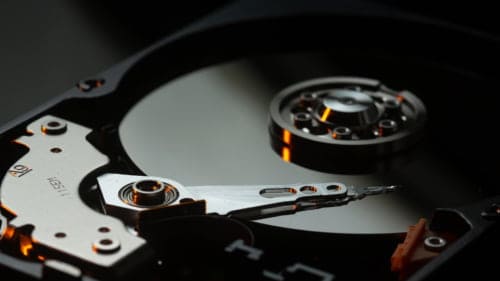Seagate, the American data storage company, is about to launch the world’s largest capacity consumer hard drive. With 20 TB of available storage space, it is 2 TB larger than the largest capacity Seagate IronWolf Pro. Other hard drive manufacturers are bound to follow up with comparable models, and in just a couple of years, 20 TB could become a standard size for hard drives.
As Seagate will have both PMR (perpendicular magnetic recording) and SMR 20 TB hard drives, you should be able to pick one up for your Unraid server sooner rather than later. PMR, which in this context is synonymous with CMR (conventional magnetic recording), is the recommended technology for parity drives. And because the parity drive has to be the largest drive in your array, it would undoubtedly be the 20 TB drive.
Should you be using 20 TB hard drives?
On paper, 20 TB sound like a fantastic innovation. Using just 20 TB drives, you could have 100 TB of available storage space with just six drives in your Unraid server. But Linus, from the Linus Tech Tips YouTube channel, has a compelling argument against increasing the size of hard drives from where they currently are.
As hard drive capacity increases, but speeds stay the same, duplicating a single hard drive will become an ever longer lasting process. You could duplicate two 10 TB simultaneously in half the time it takes to do the same with a 20 TB drive. One commenter makes the analogy to a city’s water supply: Picture a city with a massive tower, but only garden hose to get it out.
The argument for the use of 20 TB drives
If you are running a media server, a 20 TB hard drive wouldn’t be disastrous. In fact, it would allow you to use a smaller case for your Unraid server, as the data could be stored on much denser drives. You could store about 400 high-quality, dual-layer Blu-ray rips (50 GB) on a single hard drive. One or two of these drives, plus one for parity, would likely be able to store your complete media library.
Were one of the 20 TB drives to die, I reckon you could deal with not having access to your files for a couple of days, while it is rebuilt from the parity drive. However, in my opinion, a 20 TB hard drive only makes sense if the cost per terabyte is considerably lower than smaller sized drives. You shouldn’t buy a 20 TB drive just for the sake of it. There are plenty of cases that will fit many hard drives.
The argument against the use of 20 TB drives
I would never use 20 TB drives to store my photography, videography, or any work-related files for the reasons listed above. If one of those hard drives was to fail, and I had all my work on it, I would have to wait two days or more, just to be able to find out if everything still was there. Were there two 10 TB hard drives instead of a single 20 TB hard drive and one of them would die, there would be a 50% chance that the file I was looking was still accessible. And if it wasn’t, rebuilding the dead hard drive would only take a day.
And what if the drive couldn’t be recovered? You would have to download 20 TB of data from your off-site backup provider and, depending on how fast your internet connection is, it could again last days. If my maths is correct, my 50 Mbps connection would have to going full speed for more than two days. With a 10 TB drive, I would know within a day whether I should start downloading or order a backup drive from my off-site provider.
Use large hard drives with caution
In spite of my word in this article, I laud the introduction of 20 TB hard drives. I remember building my first desktop with an 80 GB and 60 GB drive, on which I stored 720 × 576 or lesser rips of the typical teenage favourites. We are entering an age, where a single drive could store all the data you ever produce without compromise. But that is also where the risks lie.
With all of your data on a single drive, it would only take one disaster for all that data to disappear and never be seen again. Even if you do not have a backup plan or don’t give two hoots about data security, the same data stored on multiple drives would be a saver setup. It is thus more important than ever that you implement a solid backup plan, such as the 3-2-1 strategy.



While I dont disagree in principle with your take on >18TB HDDs, its worthwhile to point out that even if a drive fails, your data is still accessible. The point of the parity drives isnt just to allow you to rebuild the array, but also to maintain persistent access to them in the event of a failure. Additionally, accessing your media is no more likely to cause an additional failure during reconstruction than it is during a scrub.
For those with larger drives or wider arrays that are concerned about a double disk failure, a second parity is essential – it’s the only thing that’ll save you in such circumstances short of restoring from backup.